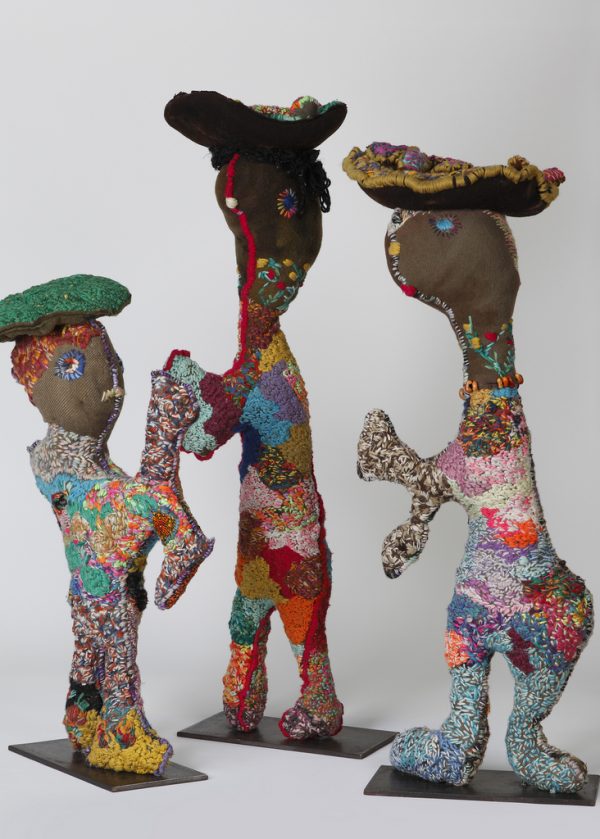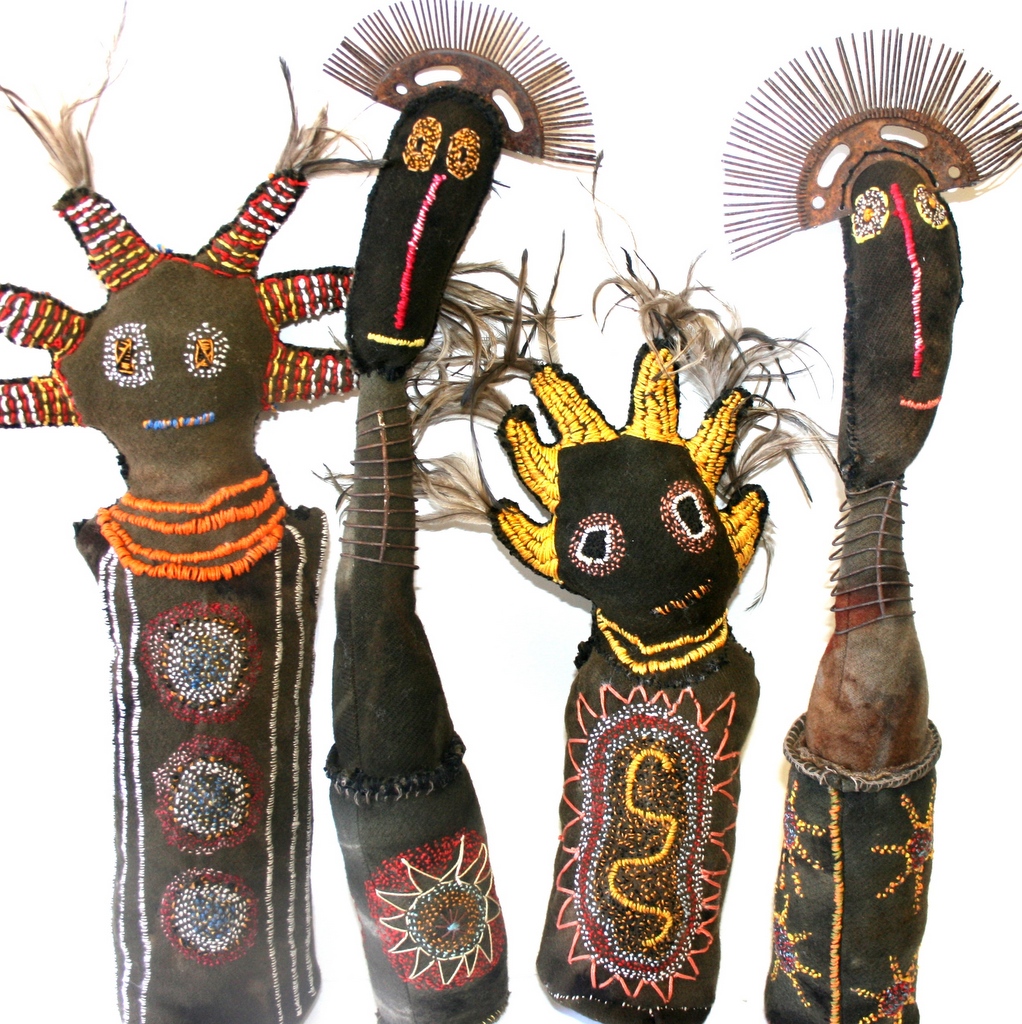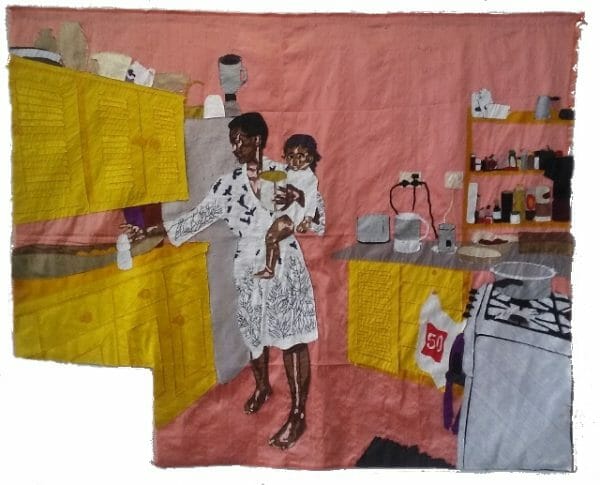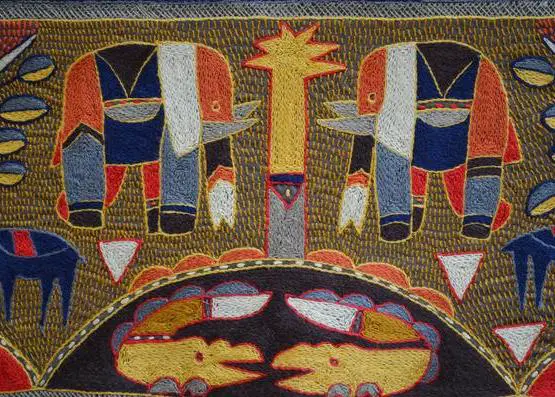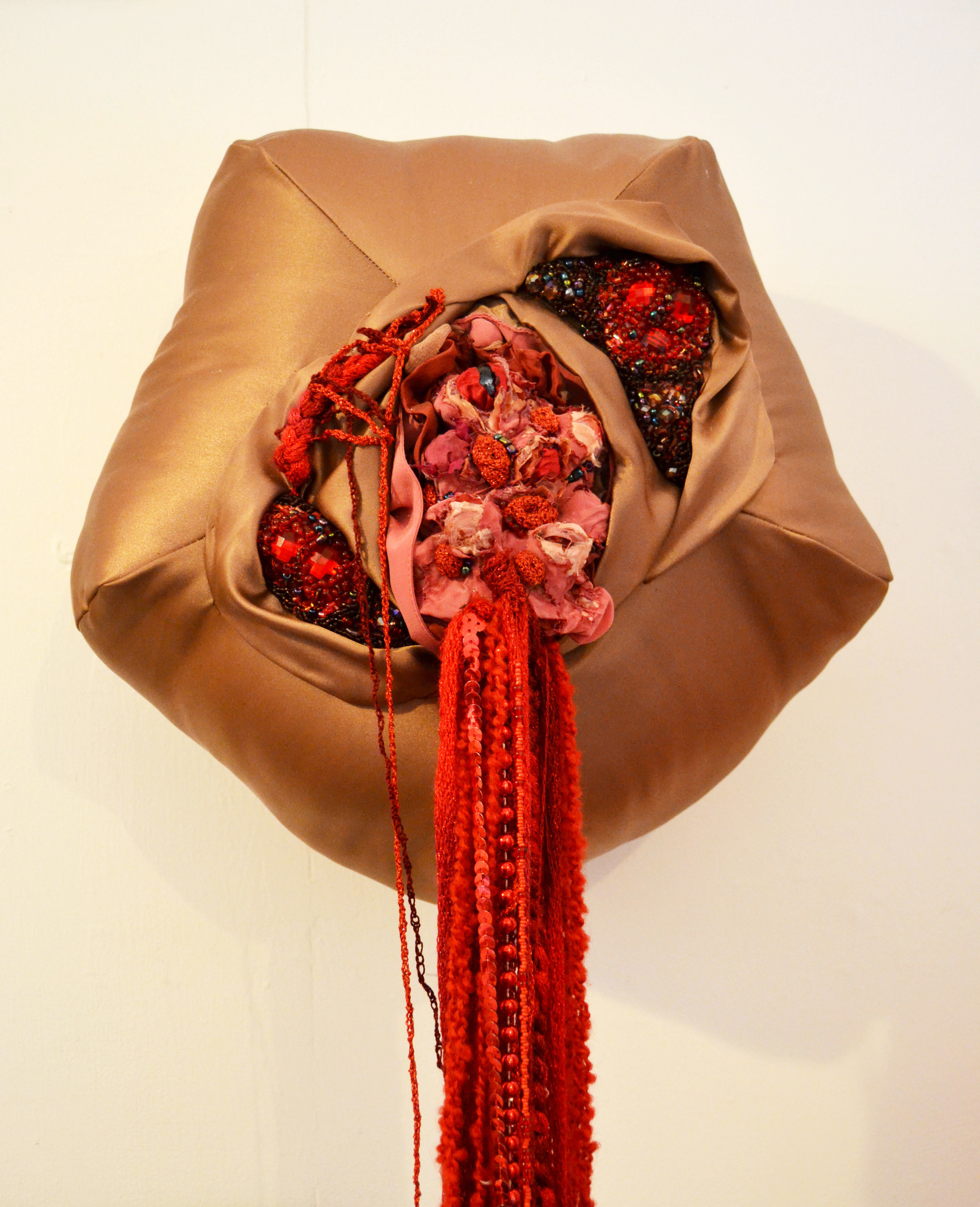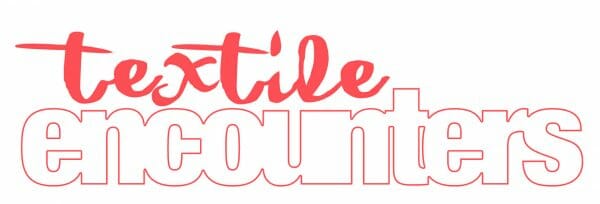
The first time I saw the work of Dulcie Sharp and the other artists of the Yarrenyty Arltere Art Centre, based in Alice Springs, was at the inaugural Tarnanthi Festival of Contemporary Aboriginal and Torres Strait Islander Art in Adelaide, South Australia, in October in 2015. Their soft sculptures with their multi-coloured, naive hand embroidery jumped out at me. I immediately felt a connection. It is as if every figure had a soul.
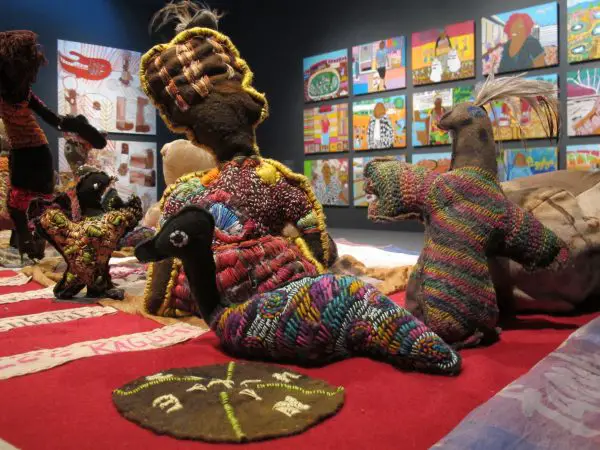
I spoke to some of the artists at the event but longed to see their world, the world where these creatures originate from. So when our family holiday plans to Central Australia came together I made sure a visit to the Art Centre was on the itinerary.
The art makes us think of our culture in a different way
and what we want people to know.
It’s good for everyone to have a place like this.
It helps us be part of both worlds.
Dulcie Sharpe – artist
Place is an important concept for the people of Larapinta Valley Town Camp in Alice Springs. For an outsider, these harsh lands in central Australia might look bleak and unforgiving, but for the western Arrernte and Luritja people who call these hills and plains home, it is filled with stories, history, life, and dreams.
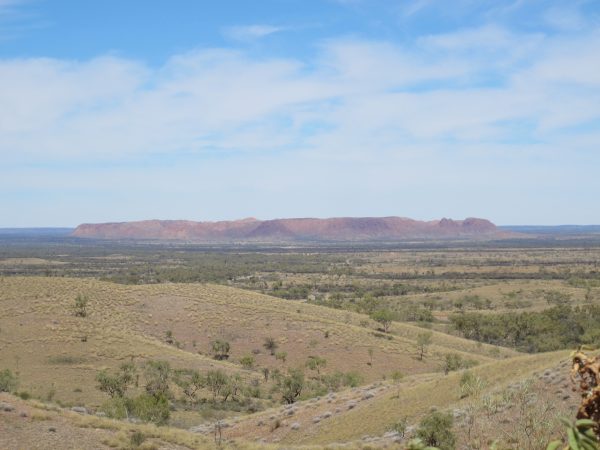
The Learning Centre was originally established in 2000 as a response to the chronic social issues faced by the people from the town camp. What started out as an arts training program is now known as the Yarrenyty Arltere Artists. A group of soft sculpture artists whose work are now represented in most major national Australian galleries.
This is the place Dulcie referred to in her quote. She is a Luritja woman, born out bush at Jay Creek, but now a respected elder in the community and a role model for other artists. Her work has been exhibited internationally and is held in major public and private collections.
The artists work with soft sculpture and textiles and are strongly influenced by their own culture – the culture of bush people who have lived in town camps for several generations.
The sculptures are made from recycled woollen blankets, dyed with tea, local plants and rusted metal to create wonderful patterns and colours. These are then used as the base material for the sculptures. The sculptures are embellished with wool embroidery and applique to create unique figures, creatures and objects.
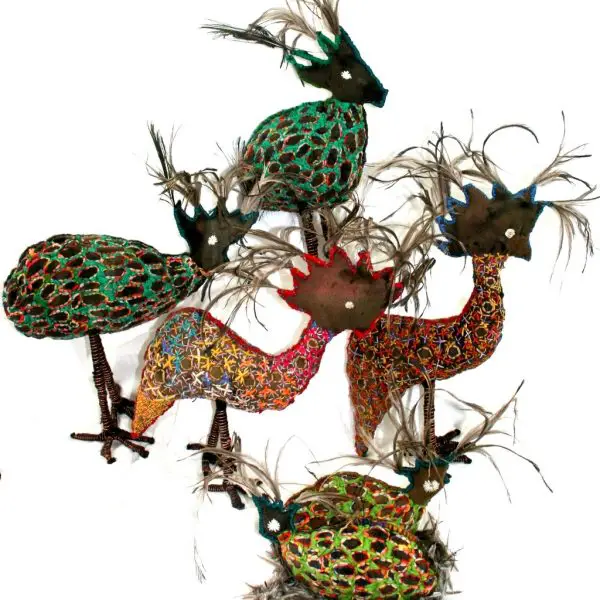
My visit on a balmy autumn day in April could not have happened at a better time. I arrived at the centre just as a blanket was being pulled from the dye vat. Opening up a blanket bundle has everyone in suspense. The rusted metal pieces and the natural plant dyes used in the process ensure that the final product is always an eagerly awaited surprise. This one had subtle green and charcoal patterns which would eventually find their way into another unique artwork.
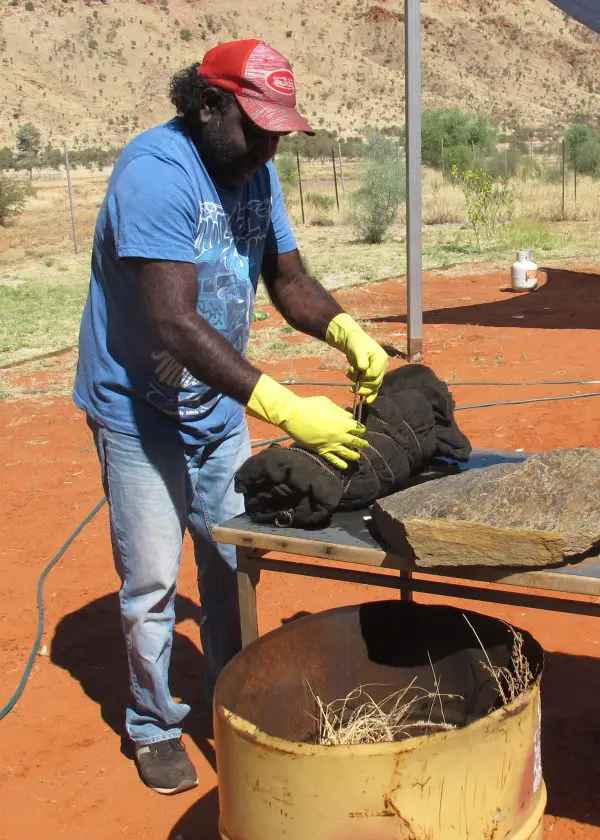
I was fortunate to see the whole artistic process in action. From the newly dyed blankets all the way through to the finished sculptures. The artists come up with concepts for their work which are then translated into pattern pieces. Figures are cut from the blankets, machine stitched and stuffed before it is meticulously filled in with hand embroidery. The story behind each piece dictates the pattern as well as the colours used for the embellishments.
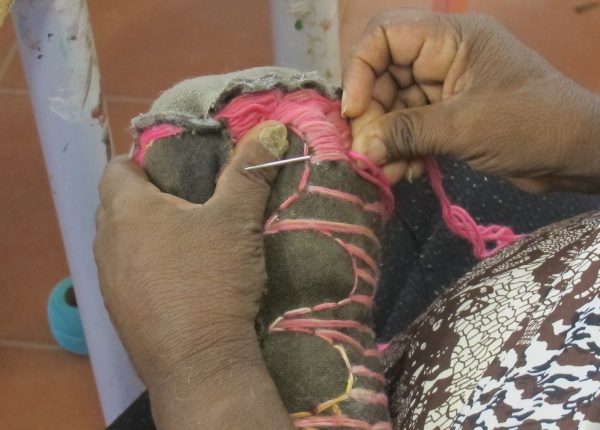
All the work is done at the art centre where the artists come together around a big table piled with yarn and thread in every conceivable colour. Works in progress, and new ideas scribbled on sketchpads find a space on there too. Candy the mascot dog keeps watch under the table, making sure everyone is happy and safe.
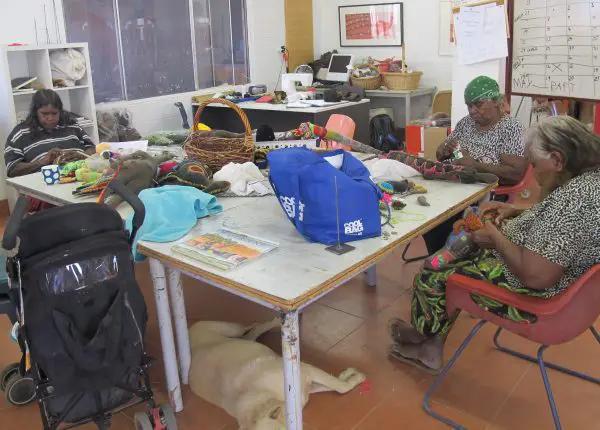
“Sewing makes me feel happy and proud”, Rhonda Sharpe, one of the Yarrenyty Arltere artists, says. “I like to do different things. It just comes to me when I am sewing and drawing. Things come into my head. Like how I make two heads on the birds and on the person. I think that’s like my head telling me different things, but I don’t really have two heads. I just get two ideas. I have to choose, every day I have to think which way to go.”
Marlene Rubitja comes to the art centre every day. “I love this art. In the beginning I didn’t see properly what was happening – how the art was making me strong. In my head and heart I grew all these ideas and I started feeling well again. Now I feel like a strong woman. I like talking about this place, this art, because I want others to be encouraged to get strong too.”
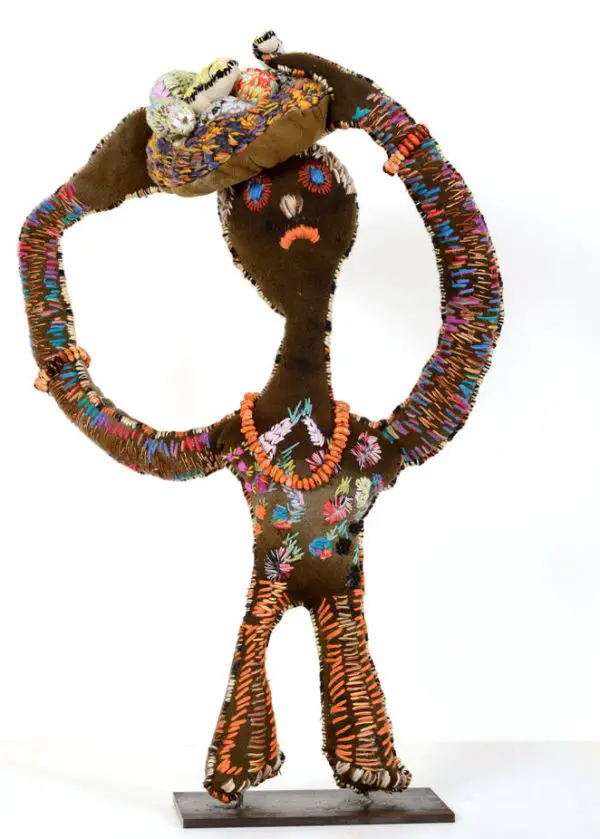
For these artists, their place is the art centre. It is where they find their peace and their strength. But their place is not just physical – it is also in their heads and in their hearts. A place where they are strong and where they can weather the storms of life.
Seeing where these sculptures are conceived, I now understand where their soul comes from. It comes from the hearts and lives of these women who tell their stories with their hands. Needle and thread translate the soul of the Larapinta Town Camp in Alice Springs into artworks worthy of the best art collections in the world.
